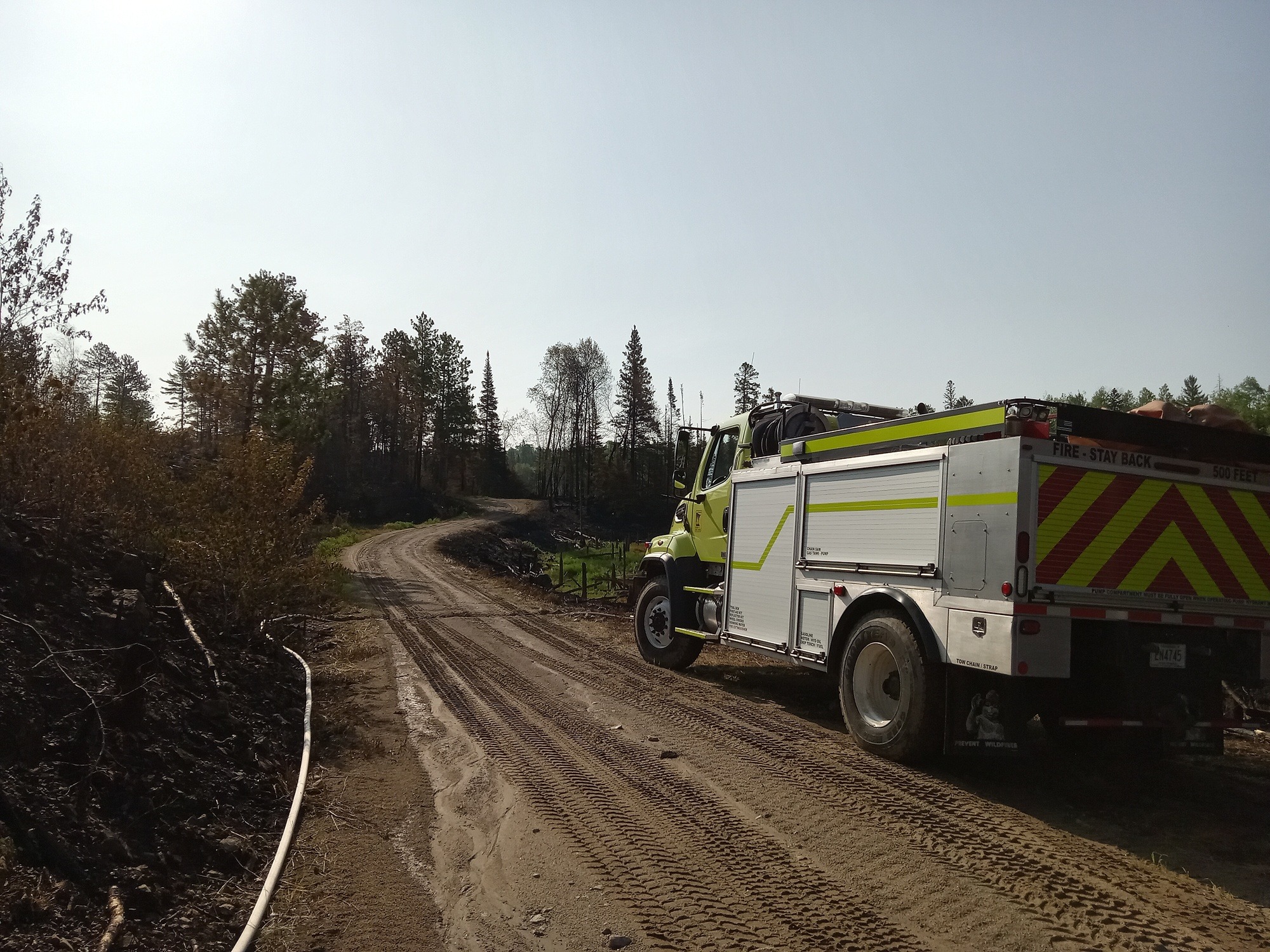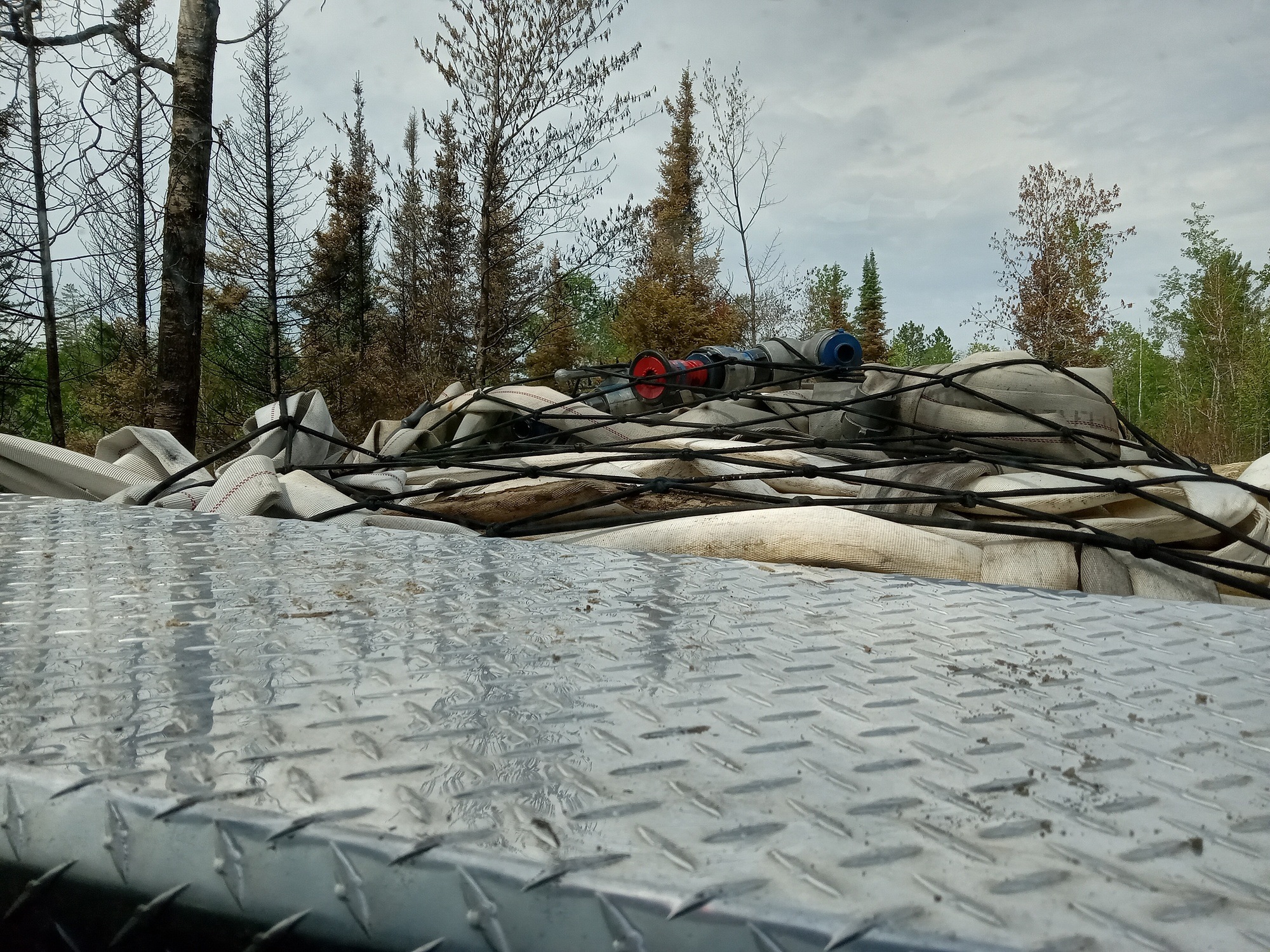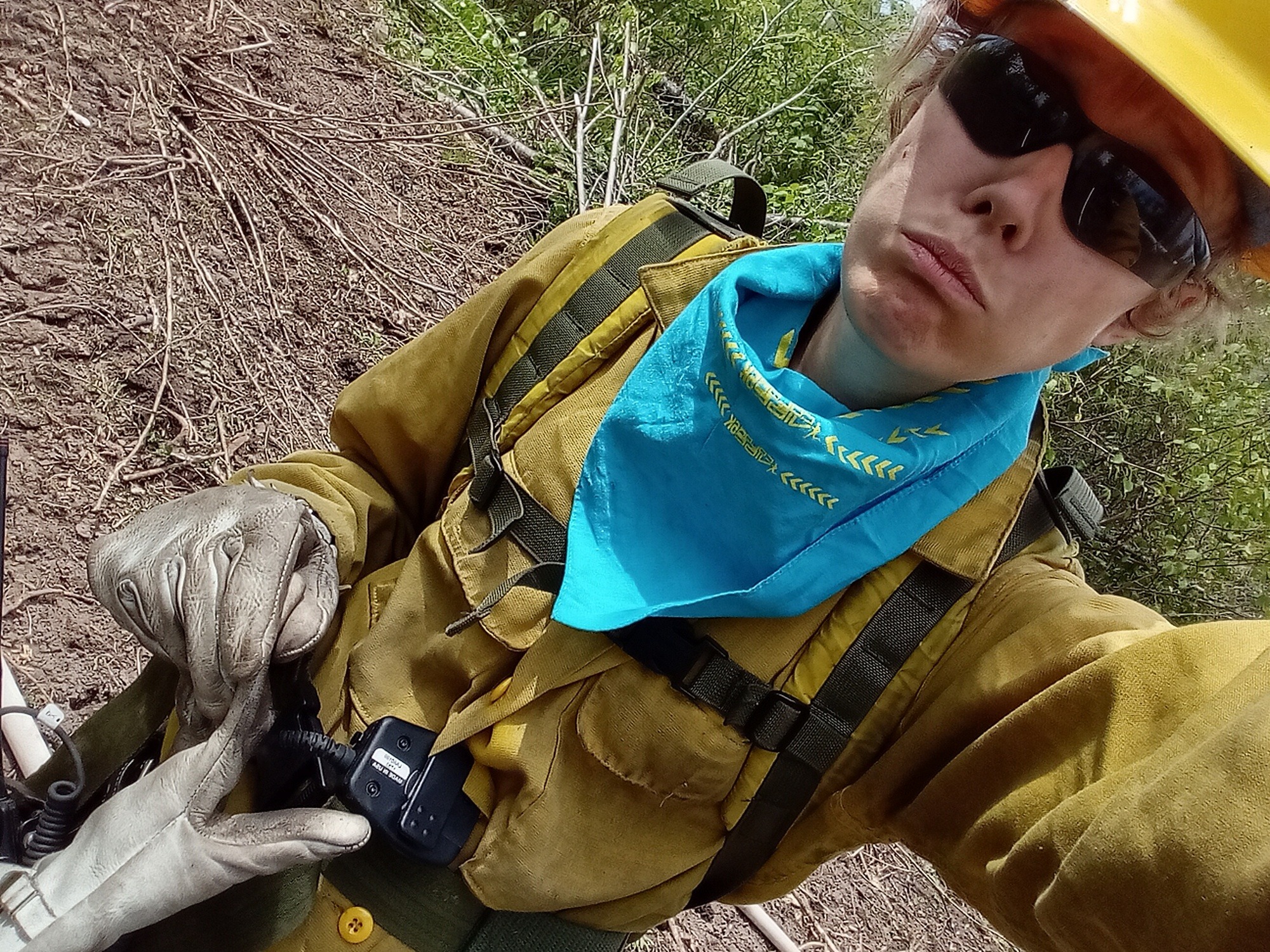My First Wildfire

By Karolyn Preiss, Three Rivers 3 Field Crew Member / AmeriCorps Member

I just got back from my very first Wildfire Assignment. There was a wildfire in Ely, Minnesota on Memorial Weekend.
When the Conservation Corps Crew was called in, the fire spanned between 15 and 20 acres.

So, the team drove up north, arriving at a hotel by 11:30pm.
The morning came quickly. We met at headquarters to officially receive our assignment at 8:00am, then we started for the site. The fire had grown to 28.9 acres overall.
Upon arrival, the first step was to build a trunk line–connected hoses to span the range of the fire–for the east side of the fireline. The east side had [variable] 50 feet of green fuels surrounded by a dozer line that had mostly been made previously–the dozer line being a path where a bulldozer ripped up the land in order to make a space in the forest to arrest the movement of flames through the trees and canopy.

A pump was set up to take water from a nearby lake, but there were not enough supplies to stretch the length of the east fire line.
The team did what we could, laying hoseline until we ran out of gated wyes, reducers, and lateral hoses that would be used to bridge the 50 foot green to fight fire at the edge of the black–the black being where the fire had blazed through, leaving smoldering ash in its wake.

An order was placed, and more hose, nozzles, and laterals were eventually delivered courtesy of other local fire houses and the Cache– the Cache being an emergency supply warehouse in Grand Rapids that serves the midwest region, distributing fire supplies as they are requested, then checking them and repairing them upon their return should they be needed again.
The fire was mostly out thanks to the firefighters who worked the previous evening, so our delayed capacity for building line was not detrimental, per se, to the fire fight.
A helicopter flies overhead, dumping water onto smoldering hazard trees.

We were essentially called in for mop-up post-fire.
A helicopter came in to drop water on any smoldering ladder fuels and/or hazard trees of the interior that could not be reached by lateral hoses, and chainsaws could be heard in the distance, cutting down other hazards and stopping the slow smoldering of large logs that has been known to last for months in more southernly climates where water is unavailable to douse flame.
The team started venturing into the black and worked to extinguish the ‘smokes’–any hot areas where smoke was trailing upward from embers or flames unseen.
It was tough work, pulling hose through jungles of branches that ripped at clothes and helmet. If the summer day didn’t feel hot enough in our full-body, long-sleeved Nomex gear, the heat emanating from the black as well as the physical exertion of pulling and building line had the sweat dripping.
It was a long day, but, by the end of it, most all smokes were extinguished, and the fire fell from an active status to a monitoring status.
We were excused for the evening and returned over the next few days for more venturing into the black in the hopes of killing any lingering live ember.

Then, finally, the fire was deemed ‘out’, the hoseline was pulled from along the dozer line and from along the black, and the trails were re-opened to the public.
The Conservation Corps Crew had their first wildfire experience.
Standing in the black with one of the other CCMI team members, taking a moment to see the devastation left in the wake of the wildfire. Everything is charred, save for a few trees along the exterior where the fire, luckily, did not touch.
Hopefully, Minnesota stays safe as ‘fire season’ continues through the hot summer months.
May this be a reminder to make sure that your campfires are properly extinguished before you leave your campsite, that you be mindful with upcoming holiday fireworks and sparklers, and that you report it immediately if you see fire beyond the scope of the usual friendly camp or bon fire.
In any case, the Conservation Corps Crew will be ready for the next wildfire should the occasion arise.
Stay safe, everyone!
